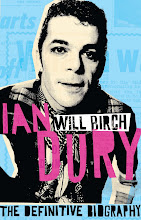“I never grew out of painting. It’s a rather Jesuit idea that people are formed in some way by the age of seven. They go to school and look over their shoulder and see somebody doing it and the teacher says, ‘That’s good.’ And you look at your thing and it’s all thumbs. I do remember when I was about eight or nine I did a black charcoal drawing of a tree with snow on it. One or two people liked it and that was enough for me. I left school at 16 and went to art school. I told my father I was going to be an interior designer. I’d never have dared say to my father I wanted to be a painter, but I was painting away.”
“Having done two years at Tunbridge Wells and then a year at Brighton, I applied to Canterbury College of Art, which was where I met Ian. He arrived the same week as I did, September 1970. He came limping in, in this fantastic cardigan, and made me see that what I wanted to do, which was paint things that I liked, was the most modern activity that I could possibly be involved with. When Ian walked into the room seven questions sprang to mind. His body became part of the room and the dynamics would change. I can remember sensing that immediately - what in other circumstances would have become love at first sight. I thought ‘he looks interesting.’ Ian used to love Victorian watercolour painters - John Frederick Lewis - people like that. He adored the highly detailed pictures, but that was a kind of perversity.”
“You couldn’t help but notice his disability. I had a friend at Tunbridge Wells who had a bad stutter. We used to draw together. That was our rebellion. I don’t go round with a cast of disabled friends, but it occurred to me later that where I would run for a bus, Ian couldn’t, so I would think, ‘well, we’ll wait for the next one.’ It was a frame of mind that I liked. It slowed one down. Ian tried to help and guide us. He would find something to talk about. But he only did it [teach at Canterbury] for two years. He resigned.”
“The reason I’m an artist is because I quite like being on my own. It’s quite a slow business, the art game. I was attracted by somebody who was forced to go at his or her own speed. They actually couldn’t physically outrun themselves. Of course, if Ian had wanted to be a runner, it would have been a disability. He said in one interview that when he became famous he felt emasculated. He couldn’t go out and be loud. For the first time in his life he felt disabled. But actually, you realise that it didn’t hamper him. He moulded the world into his own likeness.”
As told to Will Birch, May 2001. Photographs: Humphrey Ocean as a Kilburn by Ed Baxter. Humphrey and Will by Terry Lott.
Visit Humphrey Ocean’s website:
Follow Will Birch on Twitter
Will Birch website




















